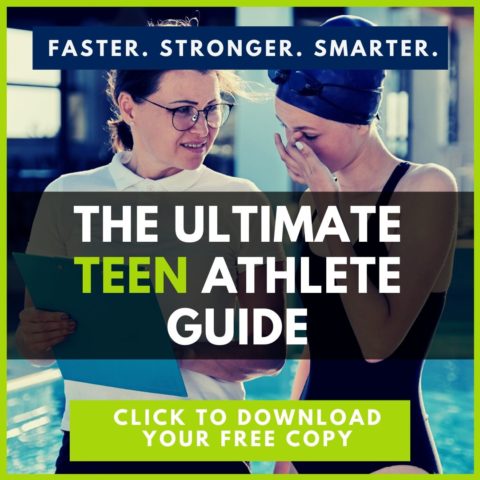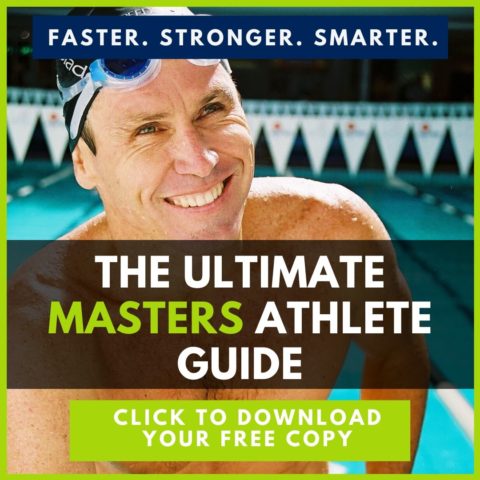Courtesy: P2Life
This year pumpkin-spiced lattes dropped faster than the first fall leaves, along with an onslaught news headlines cautioning that we may be in for a catastrophic flu season. So what can you do to reduce the chances of 2020 taking away any more precious pool time? You can get ahead of a potentially nasty flu season by taking a look at your meal plan and making sure you’re getting enough of the right nutrients. There are many factors out of your control, but with a bit of planning, you can get ahead of winter maladies that stand to interfere with your training. Aside from getting a flu shot, if recommended by your medical professional, the right combination of vitamins and minerals can help prime your body to take on whatever else 2020 throws at it, in or out of the pool.
The Sunshine Vitamin:
Vitamin D is also referred to as the sunshine vitamin as it can be synthesized by the skin when exposed to sunlight. The implications are that your body is less likely to produce this extremely beneficial vitamin in winter as we tend to spend less time outdoors, and the winter sun typically contains less of the ultraviolet B radiation (UVB) that our skin requires to synthesize this vitamin. Vitamin D has significant health benefits, especially for athletes. It plays a vital role in bone health, assists with the absorption of calcium, helps to reduce inflammation, and has a well-documented positive impact on the immune system as it is involved in the regulation of immune cells.
Sufficient vitamin D intake is also associated with a lower risk of respiratory tract infections. The Archives of Internal Medicine released a study with 19,000 participants and found that those with the lowest levels of vitamin D were the most likely to get a cold. A global study funded by the National Institute of Health Research (U.K) found “daily or weekly supplementation had the greatest benefit for individuals with the most significant vitamin D deficiency (blood levels below 10mg/dl) – cutting their risk of respiratory infection in half – and that all participants experienced some beneficial effects from regular vitamin D supplementation”. For athletes who put their bodies under significant stress while training, the stakes are high. Recovering effectively and reducing chances for injury and illness involves getting enough of the right nutrients, and this vitamin needs to be high on your priority list.
Getting enough is a national challenge:
According to the National Institutes of Health, “most people in the United States consume less than recommended amounts of vitamin D.” A study published in the Nutrition Research Journal estimates that 41.6% of adults in the US have a vitamin D deficiency. Getting enough vitamin D is recognized as a global challenge as it has significant impacts on health. Vitamin D deficiency is associated with muscle weakness, osteoporosis, autoimmune and cardiovascular diseases, cancers as well as type II diabetes.
Current recommendations for vitamin D are 400-800 IU/day which new research has found is too low for adults. While the safe upper limit published is 4,000 IU/day in the United States and Canada, research published in the Journal of Nutrients is suggesting the true safe upper limit is much higher at around 10,000 IU/day. The research suggests that the current recommended daily allowances are “grossly underestimated.” The significant difference in how the National Academies of Sciences arrived at their recommendation compared to recent findings requires a complicated footnote on data selection and meta-regression analysis, which we’ll save you from.
For those who are curious (if you’re not skip this paragraph):
Current recommendations were formulated using group averages and the current studies recommending a higher daily allowance is based on individual data, which is considered the gold standard to reduce between-people variability, reporting bias and allows for more detailed verification.
Spoiler alert, we will soon see the recommended daily allowance of vitamin D double, according to the FDA.
This has serious implications during flu season, not just for individuals, but for our teams and community. Reducing the number of individuals who are vitamin D deficient stands to reduce the burden of overall infections amongst communities during cold and flu season.
Where do you get Vitamin D3 from:
So how can you make sure you’re getting enough? Vitamin D can either be ingested or synthesized by the body when it’s exposed to sunlight. Holik explains this process most succinctly, “during exposure to sunlight the ultraviolet B radiation converts 7-dehydrocholesterol to previtamin D(3), which in turn rapidly isomerizes to vitamin D(3)”. The time required in the sun for this to occur varies according to skin color, amount of skin exposed, the time of day as well as your geography.
These variables make it difficult to conclusively say how much time outside you actually need to maintain sufficient vitamin D levels. According to the literature 13 minutes of UK sunlight at midday three times a week during the summer should be sufficient to maintain healthy vitamin D levels in Caucasian adults. In Norway 30 minutes of midday summer sun could provide the equivalent of between 10,000 – 20,000 IU of vitamin D. Studies estimate people with darker skin could need anywhere between 30 minutes to three hours or more of exposure to sunlight to produce sufficient vitamin D. This is based on direct exposure to sunlight, as UVB rays cannot penetrate windows, so even if you have plenty of exposure to light inside, your skin isn’t synthesizing vitamin D.
Once vitamin D is ingested through food, or produced by the skin, it is converted by the liver and kidneys into its active form 1,25-dihydroxyvitamin D, or more commonly known as vitamin D3 (cholecalciferol).
Foods:
With a balanced diet in the summer, you’re more likely to be getting enough to get by, however heading into colder months means you’re likely to be spending less time outdoors. Even if COVID keeps you training outside, you should pay special attention to ensure you’re getting enough vitamin D from other sources, as there is less UVB in the winter sun. Fish is an excellent source of vitamin D especially in salmon, tuna, eggs or fish oil. Vitamin D can also be found in fortified cereals, red meat and milk. Unfortunately, getting vitamin D from foods is less efficient as you would need to consume these foods almost daily, compared to a being outdoors in direct sunlight a few times a week. That being said, a well-thought out diet can take care of the inefficiency during winter.
Supplements:
It can be a good idea to check your levels with a healthcare professional, as vitamin D is one of the vitamins you want to be certain you’re getting enough of, but you don’t want to over do either, as extremely high amounts of anything can be toxic. The benefits of supplementing vitamin D, especially in the winter have been well documented and the market has many different options, although not all of them are made equal, and few of them are suitable for competitive swimmers.
Athletes looking to supplement may have a harder time selecting supplements, because the standard multivitamins don’t always provide dosages in amounts that address the additional needs of active individuals, and they don’t always contain the most effective ingredients. Many companies don’t test their products, especially multi-vitamins, to the standard required for athletes. Some supplements offer D2 (ergocalciferol), however, D3 is more effectively used by the body. The recommended dosage for moderate supplementation of D3 is 1,000-2,000 IU, however to calculate a higher dosage based on your weight you should look at 20-80IU/1-4mcg /kg daily. As vitamin D is a fat soluble vitamin it’s best taken with a meal, ideally one that is lower in fat.
P2Life’s full spectrum Sport-Multivitamins were specifically designed with this gap in mind. We provide gender-specific multi-vitamins for competitive athletes that are certified to be free of banned and illegal substances by the an independent third party, the Banned Substances Control Group (BSCG). Both P2Life’s Sport Multi-Vitamin for Men and Sport Multi-Vitamin for Women provide vitamin D3 in the therapeutic dosages (2,000 IU). They are also packed with the other key vitamins and minerals athletes need to perform at their best and maintain optimal health.
Winter can be hard on the body, especially the body of an athlete, if you’re not certain you’re getting the right macro and micro nutrients and need a boost jumpstarting your recovery, particularly if you wake up feeling stiff and tired, you might want to look at incorporating a nutritional shake. P2Life’s NutriBoost Shake provides the vitamins (including therapeutic amounts of vitamin D3) and minerals athletes need, as well as proteins and carbohydrates to jumpstart recovery, build and maintain lean muscle, and maintain optimal health so you can take on whatever gets thrown your way.
Sources
- https://ods.od.nih.gov/factsheets/VitaminD-HealthProfessional/
- https://www.p2life.com/blogs/blog/vitamin-d-the-importance-of-getting-enough
- https://examine.com/supplements/vitamin-d/
- https://www.mdpi.com/2072-6643/9/5/469/htm
- https://examine.com/nutrition/should-1000-iu-be-the-new-rda-for-vitamin-d/
- https://pubmed.ncbi.nlm.nih.gov/21310306/
- https://pubmed.ncbi.nlm.nih.gov/20795941/
- https://examine.com/nutrition/when-should-i-take-vitamin-d/
- https://examine.com/nerd/article/does-vitamin-d-supplementation-fight-off-the-common-cold/
- https://pubmed.ncbi.nlm.nih.gov/27631625/
- https://pubmed.ncbi.nlm.nih.gov/17823437/
- https://examine.com/nerd/article/should-1000-iu-be-the-new-rda-for-vitamin-d/
- https://www.nhs.uk/live-well/healthy-body/how-to-get-vitamin-d-from-sunlight/
- https://news.harvard.edu/gazette/story/2017/02/study-confirms-vitamin-d-protects-against-cold-and-flu/
- https://www.healthline.com/nutrition/vitamin-d-from-sun#overview
- https://www.medicalnewstoday.com/articles/326167#tips
- https://www.nhs.uk/live-well/healthy-body/how-to-get-vitamin-d-from-sunlight/
- https://www.ncbi.nlm.nih.gov/pmc/articles/PMC3356951/
- https://www.sciencedaily.com/releases/2017/02/170216110002.htm
- https://www.ncbi.nlm.nih.gov/pmc/articles/PMC6121423/
- https://www.fda.gov/food/new-nutrition-facts-label/daily-value-new-nutrition-and-supplement-facts-labels#1
About P2Life
P2Life is a family-owned, performance-based, nutritional supplement company that was designed for swimmers, by swimmers, to protect health and promote performance. Within one year of launching, P2Life was the preferred choice for 40% of the USA Men’s National Swim at the London Olympics. Today P2Life is the dominant force in nutrition and is tried, tested, and loved by elite and aspiring athletes across all levels; high school, collegiate and masters swimmers around the globe. Every P2Life product is independently batch tested to be certified free of banned and illegal substances. P2life products have undergone +35 years of rigorous research and development, and the difference they make is evident in the numbers. With 18 Olympic medals, +800 World Records, and +100 National Age Group Records and counting, it’s clear that P2Life athletes feel the difference.
P2Life was founded by Tim Shead, a Masters Swimming Hall of Fame Inductee and +45x World Record Holder, and co-founded by Michael Shead, a former national water polo player. Tim’s expertise in swimming and years of experience and knowledge working with nutritional products, combined with Michael’s love of innovation and technical background, has enabled the P2Life team to create a technologically savvy company that is dedicated to furthering athletic potential. P2Life strives to empower athletes with the highest-quality nutritional supplements, backed by peer-reviewed scientific research, and to arm athletes and their loved ones with accurate and reliable information to make informed decisions. The whole P2Life team is working to fuel the athletes of today and tomorrow for a bright future, in which dreams become achievable goals and sustainable realities.
FOLLOW P2LIFE ON INSTAGRAM HERE
FOLLOW P2LIFE ON FACEBOOK HERE
P2Life is a SwimSwam partner.



